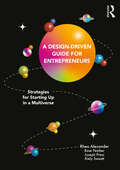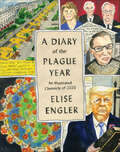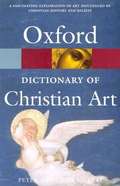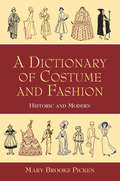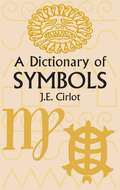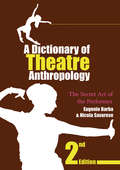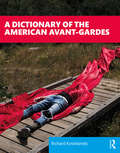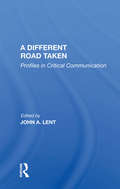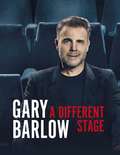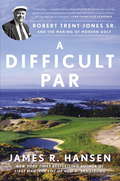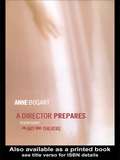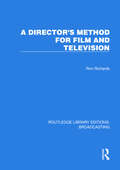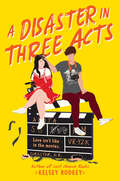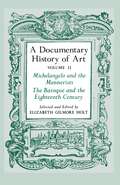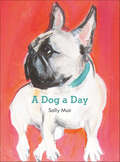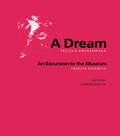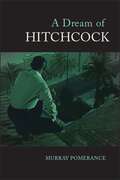- Table View
- List View
A Design Driven Guide for Entrepreneurs: Strategies for Starting up in a Multiverse
by Joseph Press Rhea Alexander Rose Pember Kiely SweattA new wave of entrepreneurs is leading a global paradigm shift towards values-driven business. This book empowers you to challenge the status quo and create value through its unique and adaptive approach to venture-building by design. Authored by a multidisciplinary team of practicing design strategists, business leaders, academics, and entrepreneurs, this hands-on guide models strategic design as a mindset for starting up: framing problems, applying methods, identifying opportunities, and creating pathways forward through futures and systems thinking. Carefully curated case studies of young impact-driven entrepreneurs along with resources, including action-based frameworks, diagrams, and templates for founders to replicate, and a reader’s checklist to enable the transformation of daily practice, will open new dimensions that amplify the global shift towards a more regenerative world and a multiverse of possibilities. Are you ready to journey to places where ideas for products, services, and experiences transform how we live and work? Then this guide is for you: the Design-Driven Entrepreneur.
A Diary of the Plague Year: An Illustrated Chronicle of 2020
by Elise EnglerAn extraordinary illustrated chronicle of 2020 that captures this indelible year in America in all its tragic, surreal, epic, and (sometimes) comedic intensityArtist Elise Engler set herself a task five years ago: to illustrate the first headline she heard on her bedside radio every morning. The idea was to create a pictorial record of one year of listening to the news. But when Donald Trump was elected, the headlines turned too wild for her to stop the experiment.Then 2020 happened. Was there ever such a year? Headlines about the death of Kobe Bryant and Donald Trump's impeachment began to give way to news of a mysterious virus in China, and Engler’s pages were quickly filled with the march of COVID-19: schools closing their doors, hospitals overflowing, graveyards full to capacity. Day by day, Engler drew every shocking turn of the year: the police murder of George Floyd and protests around the globe; a war against science and those who preached it; fires consuming California; a vicious election, absurdly contested. Other stories appeared, too: “Harvey Weinstein Sentenced,” “Ruth Bader Ginsburg Hospitalized,” “China Extends Control over Hong Kong,” and—on repeat—“Stock Market Plunges.”The result is a powerful visual record of an unprecedented time, collected in A Diary of the Plague Year, which follows the headlines from the first appearance of the coronavirus to the inauguration of President Joe Biden. Made in real time, Engler’s vibrant, immediate images recapture what it was like to live through 2020, bringing texture, feeling, and even charm to what we might not remember and what we will never forget.
A Dictionary of Christian Art
by Peter Murray Linda MurrayThe Dictionary of Christian Art, now rebranded in the best-selling Oxford Paperback Reference series, is a unique and fascinating exploration of the art and architecture that has been influenced and inspired by biblical stories and Christian history and beliefs. The Dictionary combines general essays on the periods and styles important in the history of Christian art with lots of shorter entries that describe specific works, artists, themes, and visual images, and which give the reader practical guidance on where in Europe to locate the works described. The Dictionary of Christian Art is a unique and fascinating exploration of the art and architecture that has been influenced and inspired by biblical stories and Christian history and beliefs. Among the many features of this dictionary are: detailed essays on periods and styles in art and architecture, including Byzantine, Renaissance, Baroque; general background to the Old and New Testaments, and to Christian tradition and beliefs; forms of art influenced by Christianity, such as illuminated manuscripts, stained glass; artists and architects and their works, for example Fra Angelico, Donatello, Pugin, and many others; and places and buildings, including Assisi, Roma, St Paul's, the Sistine Chapel. There are also descriptions and explanations of features of Christian churches, significant saints, popes, saints, and rulers, and a glossary of Architectural Terms and detailed bibliography.
A Dictionary of Costume and Fashion: Historic and Modern
by Mary Brooks PickenWhile most of us would have little difficulty in recognizing a buckle, hem, or seam, we might be considerably more challenged if asked to identify a godet, a trilby, or a vamp. With this handy book at your fingertips, however, you can quickly find the definition of over 10,000 words associated with wearing apparel and fashion.From bateau necklines, bobs, and bustles to plackets, havelocks, and bavolets, terms are assembled alphabetically or in groups according to dress parts, fabrics, elements of design, and other style categories. In addition, over 950 clearly detailed illustrations depict stitches, weaves, laces, garments, collars, shoes, jewelry, hair styles, and other sartorial features.This is the perfect reference for increasing fashion vocabularies, injecting a stimulating term or phrase in conversations about wearing apparel, or making articles written about clothing more understandable. Fashion writers, costume designers, manufacturers, buyers, sales people -- anyone interested in the history of fashion -- will welcome this thorough and comprehensive guidebook. "Unique in its field and containing material not easily accessible elsewhere, it definitely has a place in the general reference library for quick identification purposes and for anyone concerned with the fashion field." -- Booklist
A Dictionary of Symbols (Dover Occult Ser.)
by J. E. CirlotHumans, it's said, are symbolizing animals. At every stage of civilization, people have relied on symbolic expression, and advances in science and technology have only increased our dependence on symbols. The language of symbols is considered a science, and this informative volume offers an indispensable tool in the study of symbology. It can be used as a reference or simply browsed for pleasure. Many of its entries — those on architecture, mandala, numbers, serpent, water, and zodiac, for example — can be read as independent essays. The vitality of symbology has never been greater: An essential part of the ancient arts of the Orient and of the Western medieval traditions, symbolism underwent a 20th-century revival with the study of the unconscious, both directly in the field of dreams, visions, and psychoanalysis, and indirectly in art and poetry. A wide audience awaits the assistance of this dictionary in elucidating the symbolic worlds encountered in both the arts and the history of ideas.
A Dictionary of Theatre Anthropology: The Secret Art of the Performer
by Eugenio Barba Nicola SavareseFirst Published in 2005. Routledge is an imprint of Taylor & Francis, an informa company.
A Dictionary of the American Avant-Gardes
by Richard KostelanetzFor this American edition of his legendary arts dictionary of information and opinion, the distinguished critic and arts historian Richard Kostelanetz has selected from the fuller third edition his entries on North Americans, including Canadians, Mexicans, and resident immigrants. Typically, he provides intelligence unavailable anywhere else, no less in print than online, about a wealth of subjects and individuals. Focused upon what is truly innovative and excellent, Kostelanetz also ranges widely with insight and surprise, including appreciations of artistic athletes such as Muhammad Ali and the Harlem Globetrotters, and such collective creations as Las Vegas and his native New York City. Continuing the traditions of cheeky high-style Dictionarysts, honoring Ambrose Bierce and Nicolas Slonimsky (both with individual entries), Kostelanetz offers a "reference book" to be treasured not only in bits and chunks, but continuously as one of the ten books someone would take if they planned to be stranded on a desert isle.
A Dictionary of the Avant-Gardes: Concise Edition
by Richard KostelanetzTwenty-five years after the publication of A Dictionary of the Avant-Gardes, the distinguished critic and arts historian Richard Kostelanetz returns to his favorite subject for a third edition. Rewriting earlier entries, adding hundreds of new ones, Kostelanetz provides intelligence and information unavailable anywhere else, no less in print than online, about a wealth of subjects and individuals. Focused upon what is truly innovative and excellent, he ranges widely with insight and surprise, including appreciations of artistic athletes such as Muhammad Ali, Johan Cruyff, and the Harlem Globetrotters and such collective creations as Las Vegas and his native New York City. Continuing the traditions of cheeky high-style Dictionarysts, honoring Samuel Johnson and Nicolas Slonimsky (both with individual entries), Kostelanetz offers a "reference book" to be enjoyed not only in bits and chunks, but continuously as one of the dozen books someone would take if they planned to be stranded on a desert isle.
A Different Road Taken: Profiles In Critical Communication
by John A LentDallas Smythe, George Gerbner, Herbert Schiller, James Halloran, Kaarle Nordenstreng- these five seminal figures form the backbone of current scholarship in critical communication. From policy research to television demographics and from economic globalization to cultural imperialism, their insights and discoveries have given both scholars and the
A Different Stage: The remarkable and intimate life story of Gary Barlow told through music
by Gary BarlowTHE SUNDAY TIMES BESTSELLERJoin national treasure Gary Barlow as he opens the curtains on his remarkable life in this stunning autobiography, from his fascinating early life to his star-studded music career'Warm, wise . . . A never-before-seen insight into one of Britain's greatest songwriters' Woman's Own'I just wanted to share my personal journey through the last five decades - the highs and lows, the ups and downs. So in A Different Stage, this is me opening the curtains and sharing moments nobody has heard or seen before . . .'__________In this warm, intimate and humorous book, rich with nostalgia and unexpected intimate detail, Gary Barlow unpacks the people, music, places, things and cultural phenomena that have made him the man that he is.From the working men's club where it all began through to the sold out stadium tours, this is the story of Gary's life told through music.Filled with a mixture of brand new photography from Gary's current one-man show and incredibly personal unseen photos and notebooks, A Different Stage is a beautiful book about the man we've spent our lives listening to.__________'Refreshingly honest . . . Think you know everything there is to know about the Take That megastar? Think again' Woman & Home
A Difficult Par: Robert Trent Jones Sr. and the Making of Modern Golf
by James R. HansenThe definitive account of modern golf's foremost architect from the New York Times bestselling author of First Man: The Life of Neil A. Armstrong Robert Trent Jones was the most prolific and influential golf course architect of the twentieth century and became the archetypical modern golf course designer. Jones spread the gospel of golf by designing courses in forty-two US states and twenty-eight countries. Twenty U.S. Opens, America's national championship, have been contested on Jones-designed courses. New York Times bestselling biographer James R. Hansen, author of First Man: The Life of Neil A. Armstrong, recounts how an English immigrant boy arrived in upstate New York in 1912, just as golf was emerging as a popular pastime in America. Jones excelled as a golfer, earning admission to Cornell University, whose faculty consented to a curriculum tailored to teach him the knowledge needed to design golf courses. Cornell provided the springboard for an act of self-invention that propelled Jones from obscurity to worldwide fame. Jones believed that every hole should be "a difficult par but an easy bogey." As gifted as he was at golf design, Jones was equally skilled as a salesman, promoter, and entrepreneur. Golf Digest's annual rankings of the 100 Greatest Golf Courses have regularly featured about fifty Jones designs, paving the path for his two sons, Robert Jr., and Rees, whose work would carry on their father's tradition. Hansen examines Jones's legacy in all its complexity and influence, including the fraternal rivalry of Jones's distinguished sons.
A Director Prepares: Seven Essays on Art and Theatre
by Anne BogartA Director Prepares is a thought-provoking examination of the challenges of making theatre. In it, Anne Bogart speaks candidly and with wisdom of the courage required to create 'art with great presence'. Each chapter tackles one of the seven major areas Bogart has identified as both potential partner and potential obstacle to art-making. They are Violence; Memory; Terror; Eroticism; Stereotype; Embarrassment; and Resistance. Each one can be used to generate extraordinary creative energy, if we know how to use it. A Director Prepares offers every practitioner an extraordinary insight into the creative process. It is a handbook, Bible and manifesto, all in one. No other book on the art of theatre comes even close to offering this much understanding, experience and inspiration.
A Director's Method for Film and Television (Routledge Library Editions: Broadcasting #1)
by Ron RichardsA Director’s Method for Film and Television (1992) presents the ‘cinematic language’ approach to directing for film and television directors. It shows how the viewer perceives the nuances of the various pictures used to tell the story, and how movement within the frame creates drama and development. It outlines the techniques necessary to maximize each and every shot and create professional results.
A Disaster in Three Acts
by Kelsey RodkeyFans of Elise Bryant and Rachel Lynn Solomon will swoon for Last Chance Books author Kelsey Rodkey’s next romance, packed with snark, banter, and inconvenient crushes.Saine Sinclair knows a little something about what makes a story worth telling.Your childhood best friend refuses to kiss you during a pre-adolescent game of spin the bottle? Terrible, zero stars, would not replay that scene again. The same ex-friend becomes your new best friend’s ex? Strangely compelling, unexpected twist, worth a hate-watch. That same guy—why is he always around?—turns out to be your last shot at getting into the documentary filmmaking program of your dreams? Saine hates to admit it, but she’d watch that movie.There’s something about Holden that makes her feel like she’s the one in front of the camera—like he can see every uncomfortable truth she’s buried below the surface. Saine knows how her story’s supposed to go. So why does every moment with Holden seem intent on changing the ending?
A Doctor in The Great War
by Andrew DavidsonFeaturing 250 previously unknown photographs, this is the extraordinary true story of a young doctor whose photos left behind an astonishing firsthand account of life at the front of World War I.As a twenty-five-year-old medical officer and one of the first doctors to win the Military Cross, Fred Davidson took countless photographs while he served in the trenches from 1914-1915. Though he took them illegally, more than 250 of the photographs shot by Davidson and his fellow officers survived and are now shared for the first time in this harrowing, eye-catching, and poignant narrative of the Great War. In A Doctor in the Great War, author Andrew Davidson--the grandson of Fred--depicts the everyday lives of soldiers, both on and off duty: from the parade ground at Glasgow's Maryhill to the brothels of Armentieres, from the band of brothers who dubbed themselves "Old Contemptibles" to the original folding Kodak and Ansco cameras they used. It is the story of the 1st Cameronians, who achieved notoriety for selling the Great War's earliest front line photographs. And it is a deeply personal account of the pictures that have been passed down for three generations, describing the men who fought with Fred Davidson, the conditions they served in, the battles they saw, and the horrors they endured. A must-have for history and photography enthusiasts alike, this glimpse of the War to End All Wars is an unusually intimate portrait that will engulf you in the lives of soldiers and leave you humbled and amazed.
A Doctor in The Great War
by Andrew DavidsonFeaturing 250 previously unknown photographs, this is the extraordinary true story of a young doctor whose photos left behind an astonishing firsthand account of life at the front of World War I.As a twenty-five-year-old medical officer and one of the first doctors to win the Military Cross, Fred Davidson took countless photographs while he served in the trenches from 1914-1915. Though he took them illegally, more than 250 of the photographs shot by Davidson and his fellow officers survived and are now shared for the first time in this harrowing, eye-catching, and poignant narrative of the Great War. In A Doctor in the Great War, author Andrew Davidson--the grandson of Fred--depicts the everyday lives of soldiers, both on and off duty: from the parade ground at Glasgow's Maryhill to the brothels of Armentieres, from the band of brothers who dubbed themselves "Old Contemptibles" to the original folding Kodak and Ansco cameras they used. It is the story of the 1st Cameronians, who achieved notoriety for selling the Great War's earliest front line photographs. And it is a deeply personal account of the pictures that have been passed down for three generations, describing the men who fought with Fred Davidson, the conditions they served in, the battles they saw, and the horrors they endured. A must-have for history and photography enthusiasts alike, this glimpse of the War to End All Wars is an unusually intimate portrait that will engulf you in the lives of soldiers and leave you humbled and amazed.
A Doctor in The Great War: Unseen Photographs of Life in the Trenches
by Andrew DavidsonFeaturing 250 previously unknown photographs, this is the extraordinary true story of a young doctor whose photos left behind an astonishing firsthand account of life at the front of World War I.As a twenty-five-year-old medical officer and one of the first doctors to win the Military Cross, Fred Davidson took countless photographs while he served in the trenches from 1914-1915. Though he took them illegally, more than 250 of the photographs shot by Davidson and his fellow officers survived and are now shared for the first time in this harrowing, eye-catching, and poignant narrative of the Great War. In A Doctor in the Great War, author Andrew Davidson--the grandson of Fred--depicts the everyday lives of soldiers, both on and off duty: from the parade ground at Glasgow's Maryhill to the brothels of Armentieres, from the band of brothers who dubbed themselves "Old Contemptibles" to the original folding Kodak and Ansco cameras they used. It is the story of the 1st Cameronians, who achieved notoriety for selling the Great War's earliest front line photographs. And it is a deeply personal account of the pictures that have been passed down for three generations, describing the men who fought with Fred Davidson, the conditions they served in, the battles they saw, and the horrors they endured. A must-have for history and photography enthusiasts alike, this glimpse of the War to End All Wars is an unusually intimate portrait that will engulf you in the lives of soldiers and leave you humbled and amazed.
A Documentary History of Art, Volume 1: The Middle Ages and the Renaissance
by Elizabeth Gilmore HoltAn illuminating one-volume compendium of primary documents on the art of medieval and Renaissance EuropeThis unique collection brings together notebooks, letters, treatises, and contracts dealing with the art of the Middle Ages and Renaissance, providing extraordinary insights into the personalities and conditions of the times and revealing the stylistic and philosophical concerns that evolved during these intensively creative eras. These documents, many of them available here in English for the first time, range from Raoul Glaber&’s famous 1003 treatise on the synthesis of old and new art forms to Durand&’s essay on Christian symbolism in art and the writings of Leonardo and Dürer on anatomy, perspective, and the recreation of reality. They trace how a medieval conception of life that was inspired, oriented, and dominated by the church evolved gradually into the great reawakening of the Renaissance in which humankind itself assumed primary importance in Western art.
A Documentary History of Art, Volume 2: Michelangelo and the Mannerists, The Baroque and the Eighteenth Century
by Elizabeth Gilmore HoltThe theory and practice of art underwent a number of fascinating changes between the sixteenth and the eighteenth centuries, changes which are clearly revealed in this unique collection of letters, journals, essays, and other writings by the artists and their contemporaries. In the poems of Michelangelo, the Dialogues of Carducho, or the Discourses of Sir Joshua Reynolds, one discovers the stylistic and philosophical concerns of the artist, while the record of Veronese's trial before the Holy Tribunal, the diary of Bernini's journey in France, the letters of Rubens and Poussin or biographical sketches of Rembrandt and Watteau reveal not only the personalities but also the conditions of the times.These basic and illuminating documents, now again available in paperback, provide an unparalleled opportunity for insight into the art and ideas of the periods the author discusses.
A Dog Named Jimmy
by Rafael Mantesso100 new and classic images of popular Instagram celebrity Jimmy Choo the Bull TerrierOn Rafael Mantesso's thirtieth birthday, his wife left him. She took their cookware, their furniture, their photos, their decorations. She left Rafael alone in an empty all-white apartment. The only thing she didn't take was their bull terrier, whom she'd named after her favorite shoe designer: Jimmy Choo.With only Jimmy for company, Rafael found inspiration in his blank walls and his best friend and started snapping photos of Jimmy Choo as he trotted and cavorted around the house in glee. Then, when Jimmy collapsed in happy exhaustion next to the white wall, on a whim Rafael grabbed a marker and drew a new world around his ginger-eared pup. Suddenly, Rafael felt his long-dormant inspiration--for drawing, for art, for life--returning.The result? Hundreds of charming and cheeky images chronicling the owner and dog's relationship and adventures, including poses in a Star Wars stormtrooper helmet, passed out with liquor bottles, and as the shark in Jaws. Mantesso's Instagram feed quickly garnered fans from all over the world and caught the attention of major media outlets like Today, The Huffington Post, USA Today, and the Daily Mail, as well as Jimmy's namesake, the luxury shoe brand Jimmy Choo Ltd.Now, Mantesso presents a definitive selection of new and classic images of Jimmy and includes the backstory of how the two became such great collaborators. As heartwarming as it is hilarious, A Dog Named Jimmy will delight animal lovers everywhere. From the Hardcover edition.
A Dog a Day
by Sally MuirA lovingly curated collection of 365 charming portraits of our favorite four-legged companions, with anecdotes celebrating dogs’ endearing and irresistible quirks, based on Sally Muir’s popular “Dog a Day” Facebook page.Sally Muir’s debuted her “Dog a Day” project on Facebook in 2013: “My name is Sally Muir and this is a new gallery where I will add a dog drawing/painting every day, adding up to a massive 365-day dogfest.” As her Facebook page took off, so did the number of Sally’s portraits and her fame. Drawing on the substantial collection of artwork on her site, A Dog a Day is an irresistible collection of 365 beautiful portraits of dogs of all shapes and sizes, depicted in a range of mediums—from loosely worked sketches, prints, and charcoal drawings to oil paintings and lithographs. The artwork is accompanied by short anecdotes throughout, that reflects on these beloved animals’ goofy, loyal, and spunky dispositions. Charming and whimsical, A Dog a Day is a must for all dog lovers, a loving collection that guarantees a year’s worth of tail-wagging sweetness.
A Dragon on the Roof: The Surprising Architecture of Antoni Gaudi (Fountas & Pinnell LLI Red #Level N)
by Julie WinterbottomHave you ever seen a dragon on a roof? A giant lizard? A snail the size of a basketball? Join us on a field trip to some of the fascinating places architect Antoni Gaudi created more than 100 years ago.
A Dramatic Reinvention: German Television and Moral Renewal after National Socialism, 1956–1970
by Stewart AndersonFollowing World War II, Germany was faced not only with the practical tasks of reconstruction and denazification, but also with the longer-term mission of morally “re-civilizing” its citizens—a goal that persisted through the nation’s 1949 split. One of the most important mediums for effecting reeducation was television, whose strengths were particularly evident in the thousands of television plays that were broadcast in both Germanys in the 1950s and 1960s. This book shows how TV dramas transcended state boundaries and—notwithstanding the ideological differences between East and West—addressed shared issues and themes, helping to ease viewers into confronting uncomfortable moral topics.
A Dream
by Felicja KruszewskaThe translation of Felicja Kruszewska's A Dream introduces a major play by a twentieth-century female playwright to the English-speaking world. On March 7, 1927 A Dream - a large-scale expressionistic drama by an unknown poet - burst on the Polish theatrical scene in a dazzling debut production by the young actor Edmund Wiercinski, who would become one of the outstanding directors of his time. The play's hallucinatory visions of the rise of fascism and the heroine's longing for a providential savior on a white horse spoke directly to Polish audiences about their deepest anxieties. During the next two years A Dream received three additional stagings and became the subject of lively debate and controversy. The play, which has been successfully revived in 1974, is an outstanding example of European expressionism. The volume also contains An Excursion to the Museum, by the contemporary Polish poet, playwright, and short-story writer Tadeusz Rozewicz. A disturbing account of an utterly mundane visit to Auschwitz, the tale is a brilliant example of the playwright's technique of poetic collage.
A Dream of Hitchcock
by Murray PomeranceA Dream of Hitchcock examines the recurring motif of the dream in Hitchcock's work—dreamscapes, dream processes, the dream effect—by focusing on close readings of six celebrated but often misinterpreted films: Strangers on a Train, Rebecca, Saboteur, Rear Window, To Catch a Thief, and Family Plot. The Hitchcockian dream, as invoked here, is not so much a dream as it is a way of understanding, in its dramatic contexts, an "unearthly," irrational quality in the filmmaker's work. Rebecca revolves around problems of memory; To Catch a Thief around uncertainty; Saboteur around pungent aspiration; Family Plot around intuition; Rear Window around expansive imagination; and Strangers on a Train around delirious madness. All of these films enunciate the return of the past, the invocation of a boundary beyond which experience becomes unpredictable and uncertain, and the celebration of values that transcend narrative resolution. Murray Pomerance's distinctive method for thinking through Hitchcock's work allows these films to inform theorization, not the other way around. His original, provocative, and groundbreaking explorations point to the importance of fantasy, improbability, doubt disconcertion, hope, memory, intuition, and belief, through which the oneiric comes to the center of waking life.
